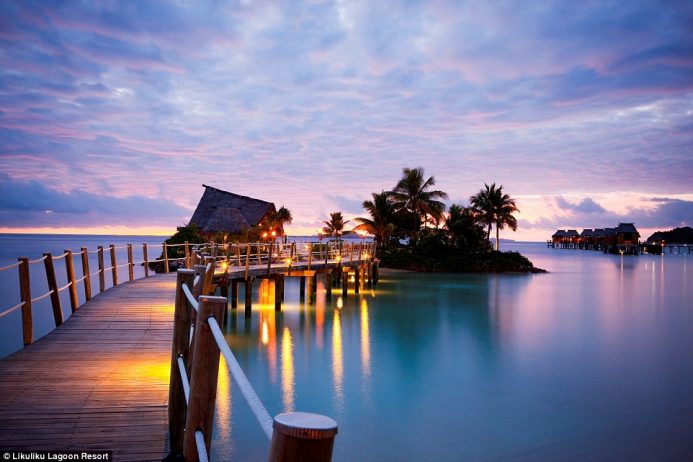When you think about beaches, sand is probably the first thing that comes to mind. But in this case, Red Beach of China is located in Dawa County, Panjin, Liaoning. Which is red and not covered in sand at all. The red beach is well-known for its landscape featuring the red plant Suaeda salsa, a member of the Chenopodiaceae family.
Panjin Red Beach has transformed to a crimson red with the arrival of autumn, which grows along its shores and takes on a crimson hue as it matures. The result is a sea of red as far as the eye can see; marshland is very rare, as the seep weed “also identified as sea blite,” common to coastal areas, is green.
A beautiful recreational wooden path, perhaps the most wonderful one of its kind in China, has been built for sightseers to mingle with waterfowl, relish the imaginary wetland views, and experience the rich and profound local culture. This island of fish and rice, an exclusive culinary culture, has been developed in the last decade or so. A spectacular winter fishing event is held every year in nearby Wolong Lake.
It is based in the biggest wetland and reed marsh in the formation. Panjin Shuangtaizi River Mouth state-level nature protection area reserves the most complete ecosystem and the biggest wetland in the world. More than 260 kinds of birds and 399 kinds of wild animals live in it. It was promoted to the state-level nature protection area in 1988 and has applied to join the International Person and Biosphere Protection Network.
It is a fantastic getaway where vacationers can do more than just sightseeing. They can experience ecological agriculture, go to paddy fields to see cute crop pictures, and even have their own customized croplands. Specializing in the use of bio-energy, the resort offers splendid, environment-friendly rural scenery.
Since the 1984 inception of Panjin City, the Red Beach has been developed as an eco-tourist destination. Moreover, the largest reed marsh in Asia is attracting many tourists. The reeds are used to make paper. The red-crowned crane also reproduces here, and it is also the scarce black-mouth gull’s largest breeding area. The landscape is composed of shallow seas and tidelands.
Red Beach of China, sees a flawless blend of natural scenery and industrial development. Nevertheless, Panjin is a famous oil city, so in the vicinity of the scenic spot, there are rows of derricks and extraction equipment. Many thanks to the strict clean production practice, no oil stains can be found on the production platforms.
The ground is a deep red, as if paint had spilled over it. There is nothing but red for miles around. As the land is very flat, many Chinese people have dubbed it “red carpet beach”. It spans over 51 square miles of coastal land. The location of the beach on the coast means the soil is incredibly saline, which is the perfect condition for seepweed to thrive.
Unlike most plants, which cannot cope with the salt in the soil, seepweed needs saline conditions to grow. During the summer, the seepweed is a lush green color. However, as it matures in autumn, the leaves turn a deep red before eventually becoming purple. Over the winter, the plant dies down and prepares to regrow in the spring.
The unbelievable seasonality of the beach has fascinated lots of tourists over the years. The wetland offers a superior environment for the rice to grow. The cattail bamboo shoot, or pusun, is a plant native to the lower reaches of the Liaohe River. However, pusun is very sensitive to its environment; it can only grow wild and has a very low yield. This nutrient-rich food is enjoyed by numerous people.
Though the Red Beach of China is usually safe for the tourists visiting it, the local wildlife and its biodiversity are themselves under threat. There is a history of tension between the protection of the wetlands and economically driven human activity. Therefore, seafood farms and rice paddies compete with wildlife for food and space as well.
In recent years, there have been better efforts made to further protect the local ecosystems, out of the recognition that biodiversity therein is key to the maintenance of clean water and the prevention of flooding for humans and animals alike.
Hence, travelers should pay heed to such considerations and not try to stray from the designated wooden path, which is designed around sustainable principles of eco-tourism.
Also Read: The Pink Beaches of Around the World



















